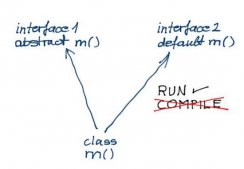前言
对于requestmappinghandlermapping,使用spring的同学基本都不会陌生,该类的作用有两个:
- 通过request查找对应的handlermethod,即当前request具体是由controller中的哪个方法进行处理;
- 查找当前系统中的interceptor,将其与handlermethod封装为一个handlerexecutionchain。
本文主要讲解requestmappinghandlermapping是如何获取handlermethod和interceptor,并且将其封装为handlerexecutionchain的。
下面话不多说了,来一起看看详细的介绍吧
1.整体封装结构
requestmappinghandlermapping实现了handlermapping接口,该接口的主要方法如下:
|
1
2
3
4
|
public interface handlermapping { // 通过request获取handlerexecutionchain对象 handlerexecutionchain gethandler(httpservletrequest request) throws exception;} |
这里我们直接看requestmappinghandlermapping是如何实现该接口的:
|
1
2
3
4
5
6
7
8
9
10
11
12
13
14
15
16
17
18
19
20
21
22
23
24
25
26
27
28
29
30
31
32
33
34
35
36
|
@override@nullablepublic final handlerexecutionchain gethandler(httpservletrequest request) throws exception { // 通过request获取具体的处理bean,这里handler可能有两种类型:handlermethod和string。 // 如果是string类型,那么就在beanfactory中查找该string类型的bean,需要注意的是,返回的 // bean如果是需要使用requestmappinghandleradapter处理,那么也必须是handlermethod类型的 object handler = gethandlerinternal(request); if (handler == null) { // 如果找不到处理方法,则获取自定义的默认handler handler = getdefaulthandler(); } if (handler == null) { return null; } if (handler instanceof string) { // 如果获取的handler是string类型的,则在当前beanfactory中获取该名称的bean, // 并将其作为handler返回 string handlername = (string) handler; handler = obtainapplicationcontext().getbean(handlername); } // 获取当前系统中配置的interceptor,将其与handler一起封装为一个handlerexecutionchain handlerexecutionchain executionchain = gethandlerexecutionchain(handler, request); // 这里corsutils.iscorsrequest()方法判断的是当前请求是否为一个跨域的请求,如果是一个跨域的请求, // 则将跨域相关的配置也一并封装到handlerexecutionchain中 if (corsutils.iscorsrequest(request)) { corsconfiguration globalconfig = this.globalcorsconfigsource.getcorsconfiguration(request); corsconfiguration handlerconfig = getcorsconfiguration(handler, request); corsconfiguration config = (globalconfig != null ? globalconfig.combine(handlerconfig) : handlerconfig); executionchain = getcorshandlerexecutionchain(request, executionchain, config); } return executionchain;} |
从上面的代码可以看出,对于handlerexecutionchain的获取,requestmappinghandlermapping首先会获取当前request对应的handler,然后将其与interceptor一起封装为一个handlerexecutionchain对象。这里在进行封装的时候,spring会对当前request是否为跨域请求进行判断,如果是跨域请求,则将相关的跨域配置封装到handlerexecutionchain中,关于跨域请求,读者可以阅读跨域资源共享 cors 详解。
2. 获取handlermethod
关于requestmappinghandlermapping是如何获取handler的,其主要在gethandlerinternal()方法中,如下是该方法的源码:
|
1
2
3
4
5
6
7
8
9
10
11
12
13
14
15
16
17
18
19
20
21
22
23
24
25
26
27
|
@overrideprotected handlermethod gethandlerinternal(httpservletrequest request) throws exception { // 获取当前request的uri string lookuppath = geturlpathhelper().getlookuppathforrequest(request); if (logger.isdebugenabled()) { logger.debug("looking up handler method for path " + lookuppath); } // 获取注册的mapping的读锁 this.mappingregistry.acquirereadlock(); try { // 通过path和request查找具体的handlermethod handlermethod handlermethod = lookuphandlermethod(lookuppath, request); if (logger.isdebugenabled()) { if (handlermethod != null) { logger.debug("returning handler method [" + handlermethod + "]"); } else { logger.debug("did not find handler method for [" + lookuppath + "]"); } } // 如果获取到的bean是一个string类型的,则在beanfactory中查找该bean, // 并将其封装为一个handlermethod对象 return (handlermethod != null ? handlermethod.createwithresolvedbean() : null); } finally { // 释放当前注册的mapping的读锁 this.mappingregistry.releasereadlock(); }} |
上述方法中,其首先会获取当前request的uri,然后通过uri查找handlermethod,并且在最后,会判断获取到的handlermethod中的bean是否为string类型的,如果是,则在当前beanfactory中查找该名称的bean,并且将其封装为handlermethod对象。这里我们直接阅读lookuphandlermethod()方法:
|
1
2
3
4
5
6
7
8
9
10
11
12
13
14
15
16
17
18
19
20
21
22
23
24
25
26
27
28
29
30
31
32
33
34
35
36
37
38
39
40
41
42
43
44
45
46
47
48
49
50
51
52
53
54
55
56
57
58
59
60
|
@nullableprotected handlermethod lookuphandlermethod(string lookuppath, httpservletrequest request) throws exception { list<match> matches = new arraylist<>(); // 通过uri直接在注册的requestmapping中获取对应的requestmappinginfo列表,需要注意的是, // 这里进行查找的方式只是通过url进行查找,但是具体哪些requestmappinginfo是匹配的,还需要进一步过滤 list<t> directpathmatches = this.mappingregistry.getmappingsbyurl(lookuppath); if (directpathmatches != null) { // 对获取到的requestmappinginfo进行进一步过滤,并且将过滤结果封装为一个match列表 addmatchingmappings(directpathmatches, matches, request); } if (matches.isempty()) { // 如果无法通过uri进行直接匹配,则对所有的注册的requestmapping进行匹配,这里无法通过uri // 匹配的情况主要有三种: // ①在requestmapping中定义的是pathvariable,如/user/detail/{id}; // ②在requestmapping中定义了问号表达式,如/user/?etail; // ③在requestmapping中定义了*或**匹配,如/user/detail/** addmatchingmappings(this.mappingregistry.getmappings().keyset(), matches, request); } if (!matches.isempty()) { // 对匹配的结果进行排序,获取相似度最高的一个作为结果返回,这里对相似度的判断时, // 会判断前两个是否相似度是一样的,如果是一样的,则直接抛出异常,如果不相同, // 则直接返回最高的一个 comparator<match> comparator = new matchcomparator(getmappingcomparator(request)); matches.sort(comparator); if (logger.istraceenabled()) { logger.trace("found " + matches.size() + " matching mapping(s) for [" + lookuppath + "] : " + matches); } // 获取匹配程度最高的一个匹配结果 match bestmatch = matches.get(0); if (matches.size() > 1) { // 如果匹配结果不止一个,首先会判断是否是跨域请求,如果是, // 则返回preflight_ambiguous_match,如果不是,则会判断前两个匹配程度是否相同, // 如果相同则抛出异常 if (corsutils.ispreflightrequest(request)) { return preflight_ambiguous_match; } match secondbestmatch = matches.get(1); if (comparator.compare(bestmatch, secondbestmatch) == 0) { method m1 = bestmatch.handlermethod.getmethod(); method m2 = secondbestmatch.handlermethod.getmethod(); throw new illegalstateexception("ambiguous handler methods mapped for" + " http path '" + request.getrequesturl() + "': {" + m1 + ", " + m2 + "}"); } } // 这里主要是对匹配结果的一个处理,主要包含对传入参数和返回的mediatype的处理 handlematch(bestmatch.mapping, lookuppath, request); return bestmatch.handlermethod; } else { // 如果匹配结果是空的,则对所有注册的mapping进行遍历,判断当前request具体是哪种情况导致 // 的无法匹配:①requestmethod无法匹配;②consumes无法匹配;③produces无法匹配; // ④params无法匹配 return handlenomatch(this.mappingregistry.getmappings().keyset(), lookuppath, request); }} |
这里对于结果的匹配,首先会通过uri进行直接匹配,如果能匹配到,则在匹配结果中尝试进行requestmethod,consumes和produces等配置的匹配;如果通过uri不能匹配到,则直接对所有定义的requestmapping进行匹配,这里主要是进行正则匹配,如果能匹配到。如果能够匹配到,则对匹配结果按照相似度进行排序,并且对前两个结果相似度进行比较,如果相似度一样,则抛出异常,如果不一样,则返回相似度最高的一个匹配结果。如果无法获取到匹配结果,则对所有的匹配结果进行遍历,判断当前request具体是哪一部分参数无法匹配到结果。对于匹配结果的获取,主要在addmatchingmappings()方法中,这里我们继续阅读该方法的源码:
|
1
2
3
4
5
6
7
8
9
10
|
private void addmatchingmappings(collection<t> mappings, list<match> matches, httpservletrequest request) { for (t mapping : mappings) { t match = getmatchingmapping(mapping, request); if (match != null) { matches.add(new match(match, this.mappingregistry.getmappings().get(mapping))); } }} |
对于requestmapping的匹配,这里逻辑比较简单,就是对所有的requestmappinginfo进行遍历,然后将request分别于每个requestmappinginfo进行匹配,如果匹配上了,其返回值就不为空,最后将所有的匹配结果返回。如下是getmatchingmapping()方法的源码(其最终调用的是requestmappinginfo.getmatchingcondition()方法):
|
1
2
3
4
5
6
7
8
9
10
11
12
13
14
15
16
17
18
19
20
21
22
23
24
25
26
27
28
29
30
31
32
33
34
35
36
37
38
39
40
41
42
43
44
|
@override@nullablepublic requestmappinginfo getmatchingcondition(httpservletrequest request) { // 判断request请求的类型是否与当前requestmethod匹配 requestmethodsrequestcondition methods = this.methodscondition.getmatchingcondition(request); // 判断request请求的参数是否与requestmapping中params参数配置的一致 paramsrequestcondition params = this.paramscondition.getmatchingcondition(request); // 判断request请求的headers是否与requestmapping中headers参数配置的一致 headersrequestcondition headers = this.headerscondition.getmatchingcondition(request); // 判断request的请求体类型是否与requestmapping中配置的consumes参数配置的一致 consumesrequestcondition consumes = this.consumescondition.getmatchingcondition(request); // 判断当前requestmapping将要返回的请求体类型是否与request中accept的header指定的一致 producesrequestcondition produces = this.producescondition.getmatchingcondition(request); // 对于上述几个判断,如果匹配上了,那么其返回值都不会为空,因而这里会对每个返回值都进行判断, // 如果有任意一个为空,则说明没匹配上,那么就返回null if (methods == null || params == null || headers == null || consumes == null || produces == null) { return null; } // 对于前面的匹配,都是一些静态属性的匹配,其中最重要的uri的匹配,主要是正则匹配, // 就是在下面这个方法中进行的 patternsrequestcondition patterns = this.patternscondition.getmatchingcondition(request); // 如果uri没匹配上,则返回null if (patterns == null) { return null; } // 这里主要是对用户自定义的匹配条件进行匹配 requestconditionholder custom = this.customconditionholder.getmatchingcondition(request); if (custom == null) { return null; } // 如果上述所有条件都匹配上了,那么就将匹配结果封装为一个requestmappinginfo返回 return new requestmappinginfo(this.name, patterns, methods, params, headers, consumes, produces, custom.getcondition());} |
可以看到,对于一个requestmapping的匹配,主要包括:requestmethod,params,headers,consumes,produces,uri和自定义条件的匹配,如果这几个条件都匹配上了,才能表明当前requestmapping与request匹配上了。
3. interceptor的封装
关于inteceptor的封装,由前述第一点可以看出,其主要在gethandlerexecutionchain()方法中,如下是该方法的源码:
|
1
2
3
4
5
6
7
8
9
10
11
12
13
14
15
16
17
18
19
20
21
22
23
24
|
protected handlerexecutionchain gethandlerexecutionchain(object handler, httpservletrequest request) { // 将当前handler封装到handlerexecutionchain对象中 handlerexecutionchain chain = (handler instanceof handlerexecutionchain ? (handlerexecutionchain) handler : new handlerexecutionchain(handler)); // 获取当前request的uri,用于mappedinterceptor的匹配 string lookuppath = this.urlpathhelper.getlookuppathforrequest(request); // 对当前所有注册的interceptor进行遍历,如果其是mappedinterceptor类型,则调用其matches() // 方法,判断当前interceptor是否能够应用于该request,如果可以,则添加到handlerexecutionchain中 for (handlerinterceptor interceptor : this.adaptedinterceptors) { if (interceptor instanceof mappedinterceptor) { mappedinterceptor mappedinterceptor = (mappedinterceptor) interceptor; if (mappedinterceptor.matches(lookuppath, this.pathmatcher)) { chain.addinterceptor(mappedinterceptor.getinterceptor()); } } else { // 如果当前interceptor不是mappedinterceptor类型,则直接将其添加到 // handlerexecutionchain中 chain.addinterceptor(interceptor); } } return chain;} |
对于拦截器,理论上,spring是会将所有的拦截器都进行一次调用,对于是否需要进行拦截,都是用户自定义实现的。这里如果对于uri有特殊的匹配,可以使用mappedinterceptor,然后实现其matches()方法,用于判断当前mappedinterceptor是否能够应用于当前request。
4. 小结
本文首先讲解了spring是如何通过request进行匹配,从而找到具体处理当前请求的requestmapping的,然后讲解了spring是如何封装interceptor,将handlermethod和interceptor封装为一个handlerexecutionchain的。
总结
以上就是这篇文章的全部内容了,希望本文的内容对大家的学习或者工作具有一定的参考学习价值,如果有疑问大家可以留言交流,谢谢大家对服务器之家的支持。
原文链接:https://my.oschina.net/zhangxufeng/blog/2177464













